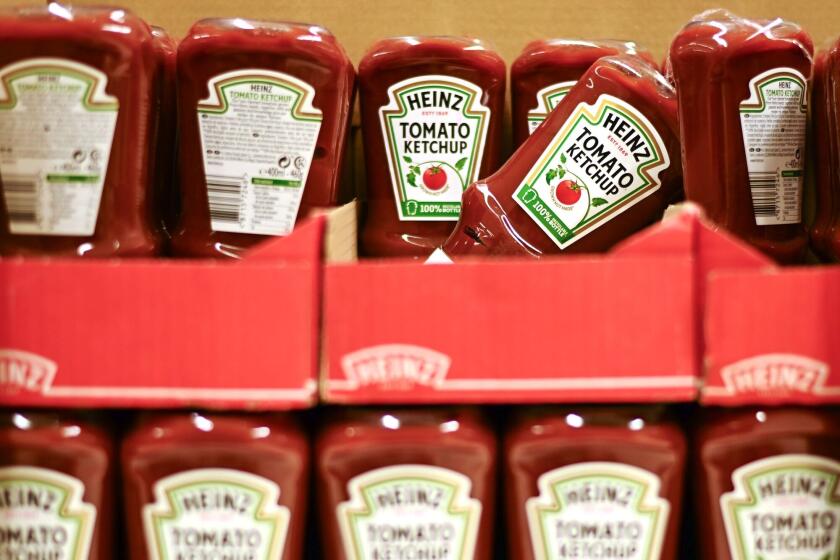Mix of Ingredients in <i> Herbes de Provence</i>
- Share via
Question: Recently you ran a recipe calling for herbes de Provence. What is it?
Answer: “Herbes de Provence is a mixture of the herbs most frequently found in that southern French province,” explains Simone Beck in her book “New Menus from Simca’s Cuisine” (Harcourt Brace Jovanovich: 1979). “Dried thyme, oregano, marjoram and savory ground with a small amount of bay leaf is the most familiar blend and is the one I prefer. Many food shops in the United States now carry herbes de Provence imported from France, but a mixing of your own fresh or dried herbs will do as nicely.”
Q: May I use cake flour instead of all-purpose flour in my recipes for biscuits, quick bread, muffins, etc.? Or even my cake recipes that now call for all-purpose flour? What kind of results could I expect? Would I substitute cup for cup?
A: Cake flour is milled from soft wheat and is significantly lower in protein (about 7.5%) than all-purpose flour (about 10.5%). Although it makes tender, fine textured cakes, there is not enough protein in cake flour to produce satisfactory breads, according to author Margaret McWilliams in “Food Fundamentals” (John Wiley & Sons: 1985).
McWilliams explains how the proteins in wheat flour combine with water to “form a complex known collectively as gluten.” Gluten is what provides the structure to baked products.
Biscuits, quick breads and muffins prepared with cake flour are likely to be crumbly and difficult to serve. Cakes developed using all-purpose flour may turn out successfully, but we cannot guarantee the results without testing the recipes.
Should you decide to experiment, substitute one cup plus two tablespoons cake flour for each one cup of all-purpose flour called for in the recipe.
Q: When an opened jar of stuffed green olives starts getting white and cloudy, are there any solutions for salvage?
A: In “Nobody Ever Tells You These Things” (Holt, Rinehart & Winston: 1967), the late Helen McCully answers a similar question on what you can do about the film that forms on opened bottles of olives, this way: “Not much. It’s perfectly harmless and doesn’t affect the olives. It’s just not very attractive. You can scrape it off or, if you have a half bottle or less, turn them into a clean, but smaller bottle, thus eliminating the air space that is the cause of the problem. Refrigerate, of course.”
Q: What is the best way to store potatoes?
A: According to information from the Potato Board, store potatoes in a cool, dry, dark place that’s well ventilated. At ideal temperatures (45 to 50 degrees), potatoes will keep well for several weeks.
At room temperature, potatoes will keep well for one week. Temperatures over 50 degrees encourage sprouting and shriveling. Sprouting potatoes can still be used but there is some waste; break off or cut out sprouts; it may be desirable to peel before cooking.
Avoid prolonged exposure of potatoes to light, which causes them to turn green. This greening produces a bitter flavor. If greening occurs, the area affected should be pared off before the potato is used.
Potatoes should not be refrigerated. At temperatures below 40 degrees, potatoes develop a sweet taste, a result of some of the potato’s starch turning to sugar. This increase in sugar also causes the potato to darken when cooked.
More to Read
Eat your way across L.A.
Get our weekly Tasting Notes newsletter for reviews, news and more.
You may occasionally receive promotional content from the Los Angeles Times.










